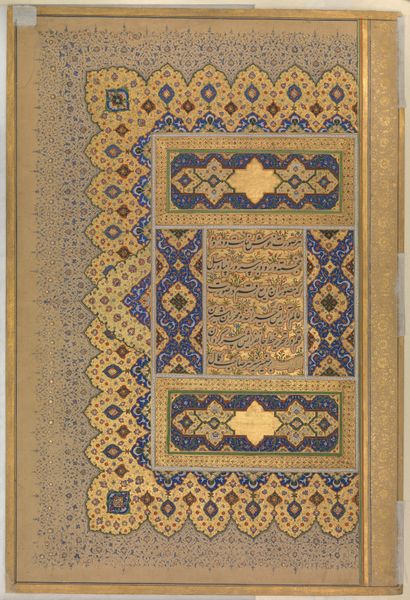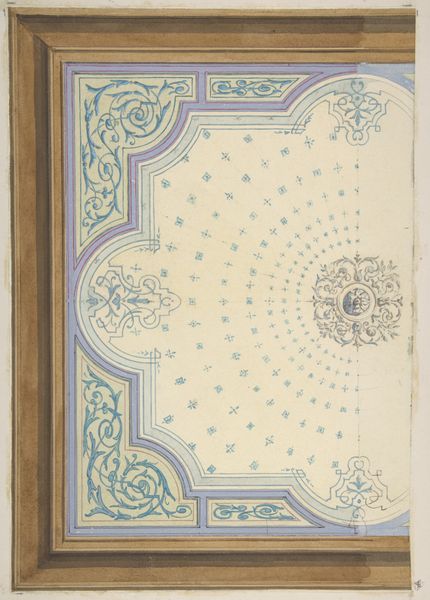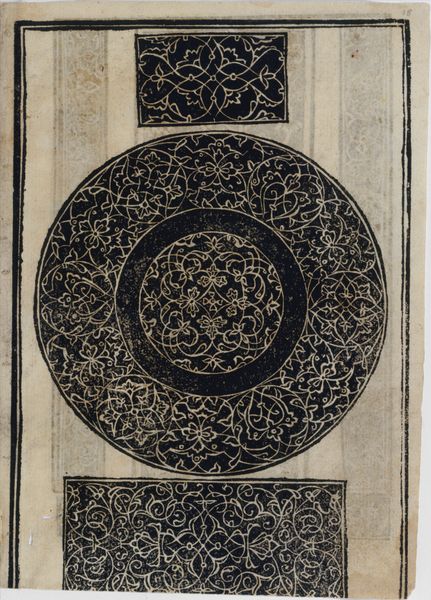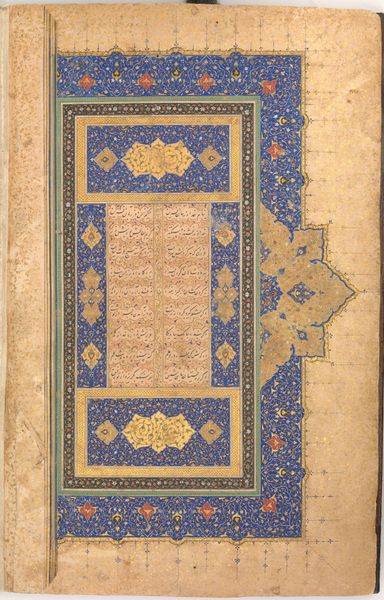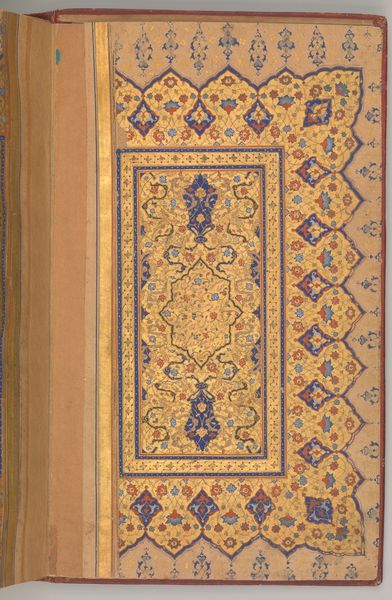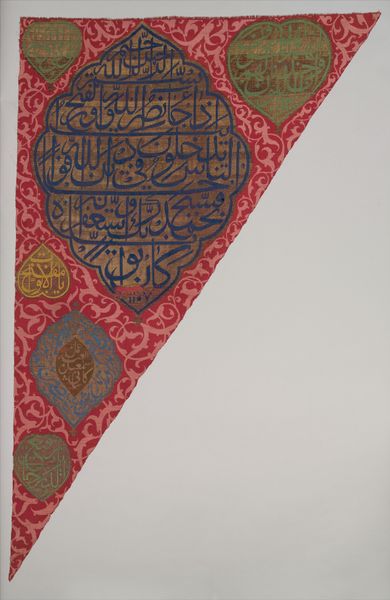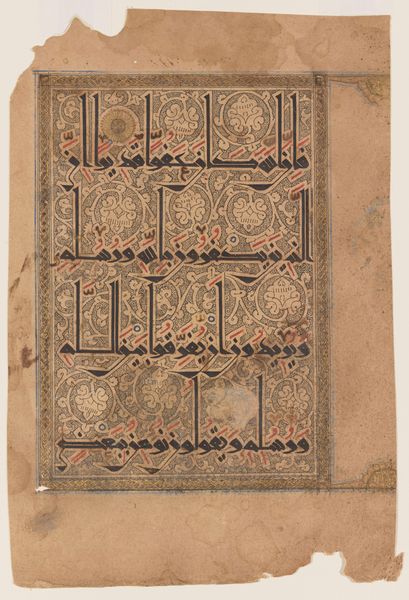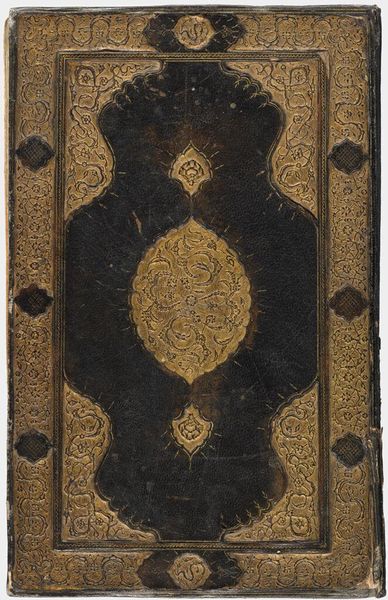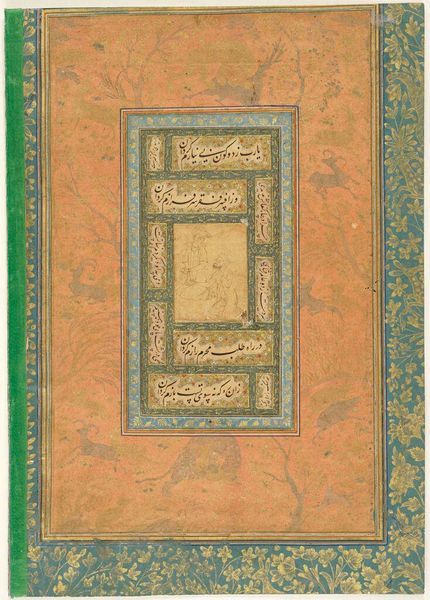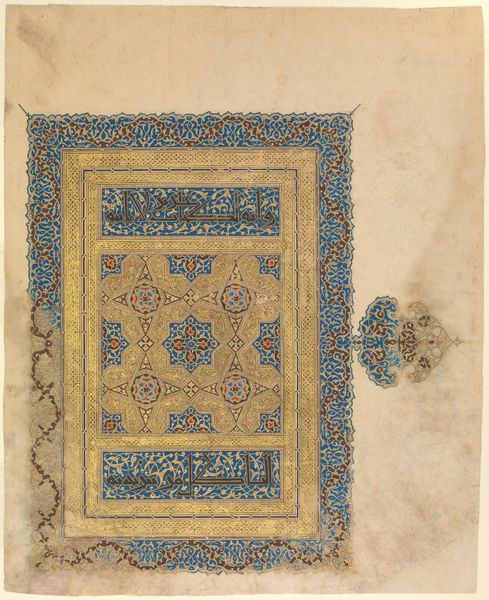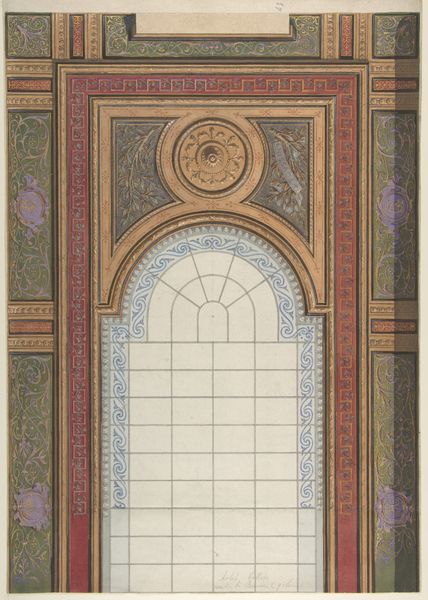
Rosette Bearing the Name and Title of Emperor Aurangzeb (Recto), from the Shah Jahan Album 1605 - 1683
0:00
0:00
#
geometric pattern
#
geometric
#
islamic-art
#
miniature
#
calligraphy
Dimensions: H. 15 3/16 in. (38.6 cm) W. 10 7/16 in. (26.5 cm)
Copyright: Public Domain
Mir 'Ali Haravi created this rosette bearing the name and title of Emperor Aurangzeb for the Shah Jahan Album. It is from a time when the Mughal Empire, with its incredible wealth and power, was expanding its influence in the Indian subcontinent. This work reflects the intertwining of artistic expression and imperial power. The rosette's intricate geometric patterns, combined with the calligraphic inscription, represent a visual articulation of authority and cultural identity. The central inscription, bearing Aurangzeb's name, suggests a divine right to rule, a concept used across cultures to legitimize power. The geometric design encourages a space of contemplation, perhaps reflecting the contemplative practices valued within the Mughal court. The work’s beauty and complexity is a testament to the cultural synthesis occurring at the time, combining Persian, Islamic, and Indian artistic traditions. As you consider the work, think about how art becomes a means of shaping perceptions of power. How does the rosette invite us to reflect on the relationship between aesthetic beauty, cultural identity, and political authority?
Comments
No comments
Be the first to comment and join the conversation on the ultimate creative platform.

